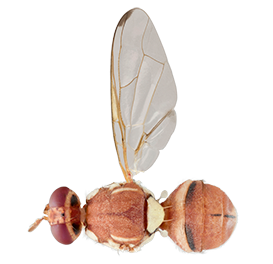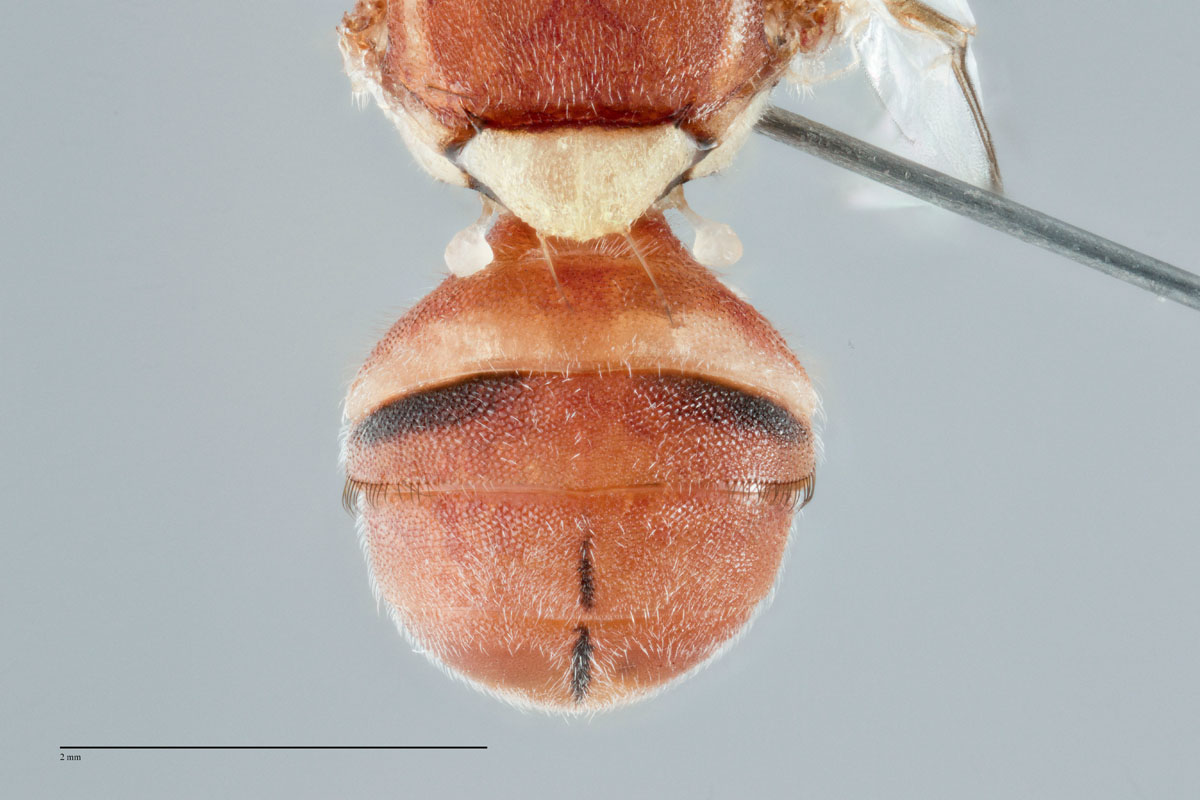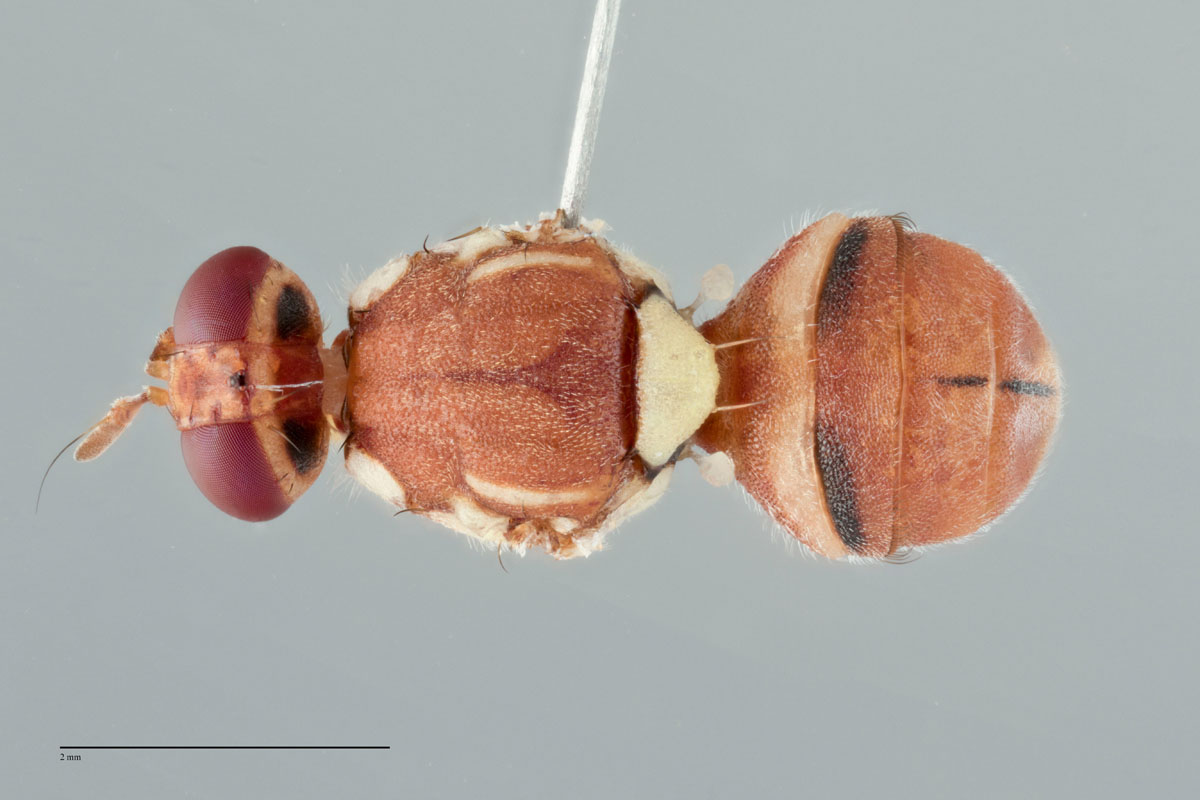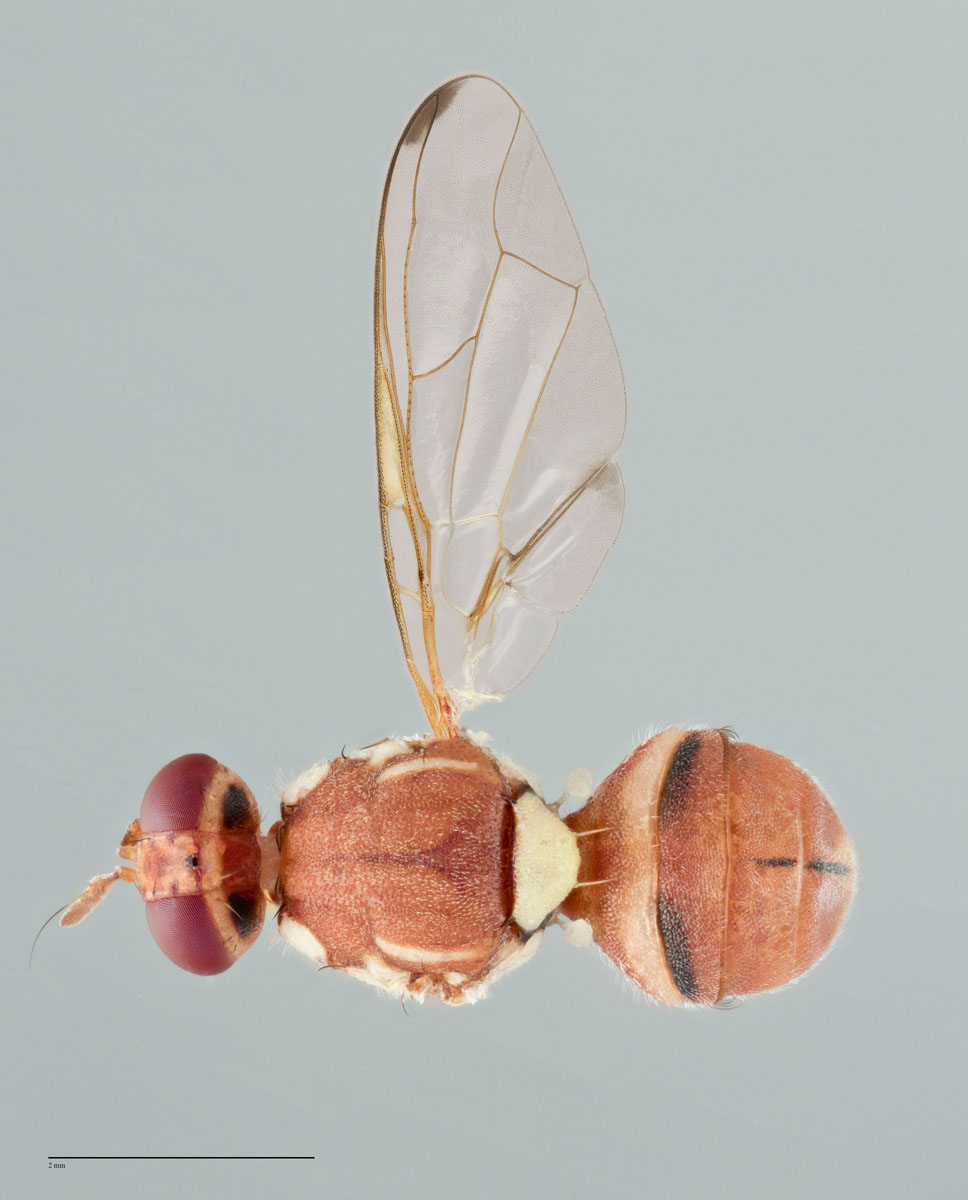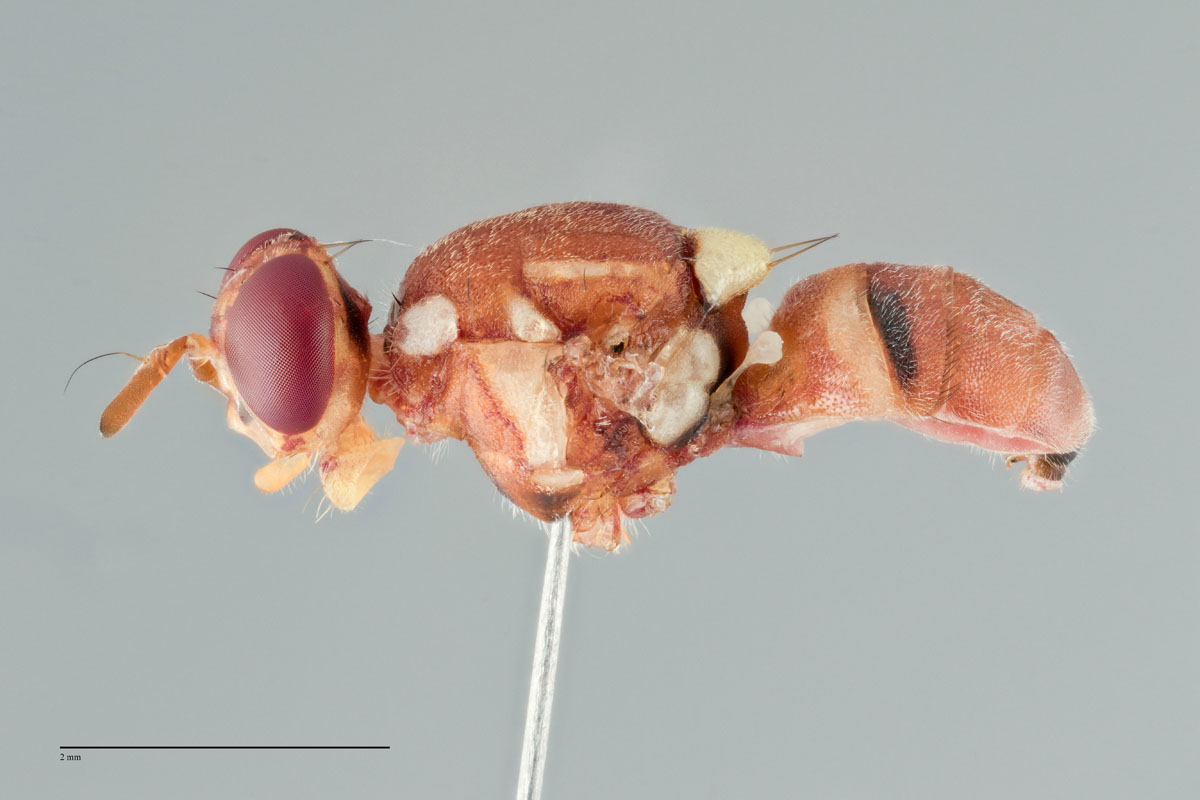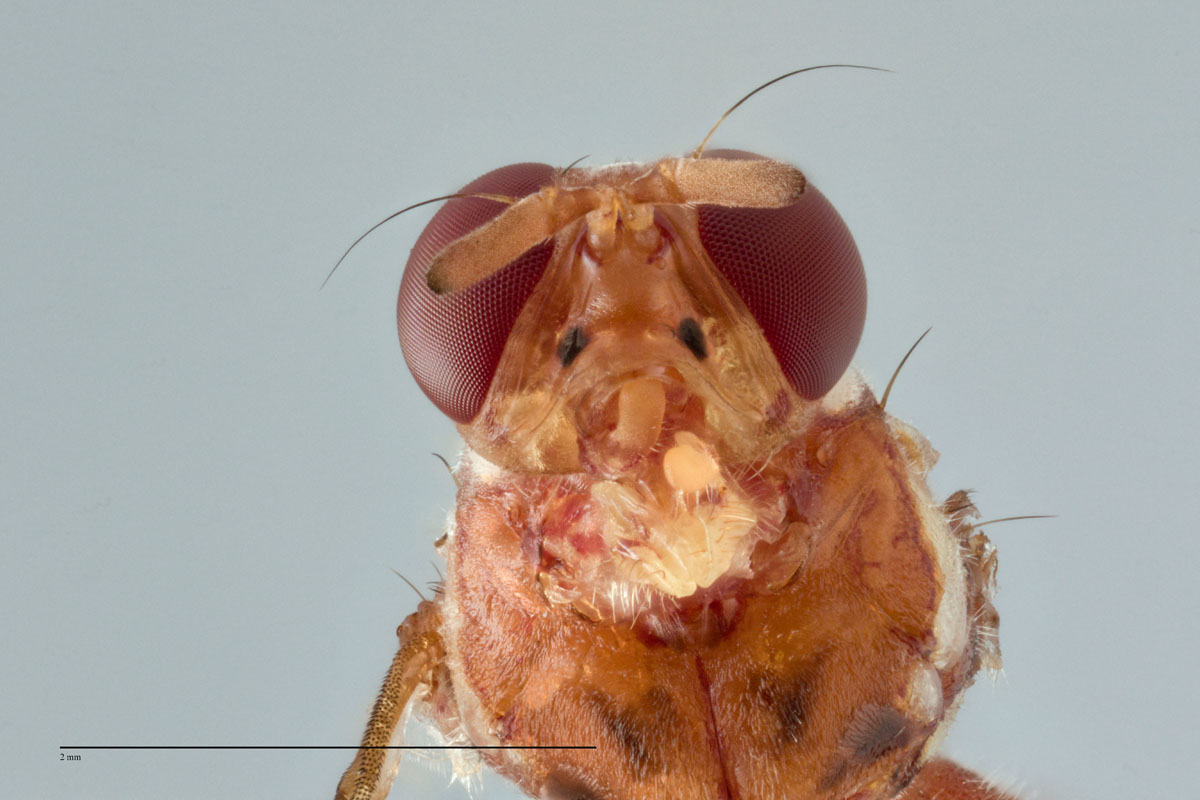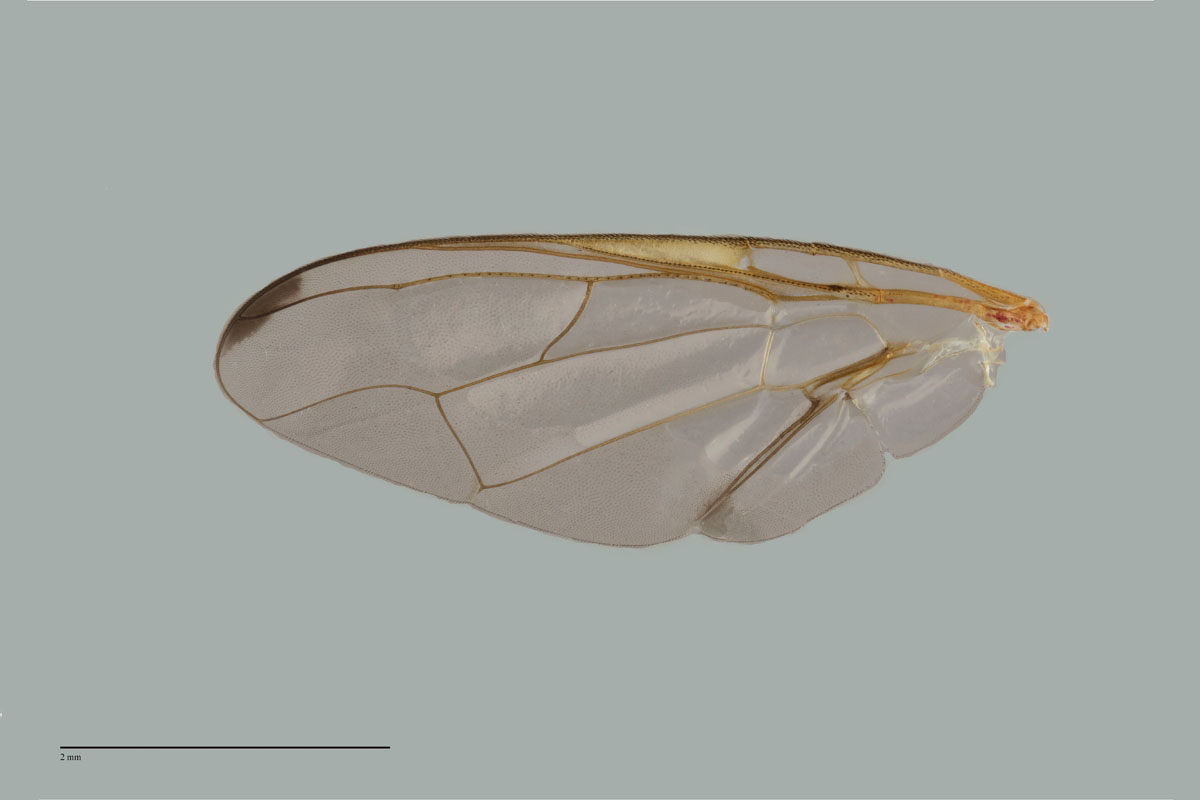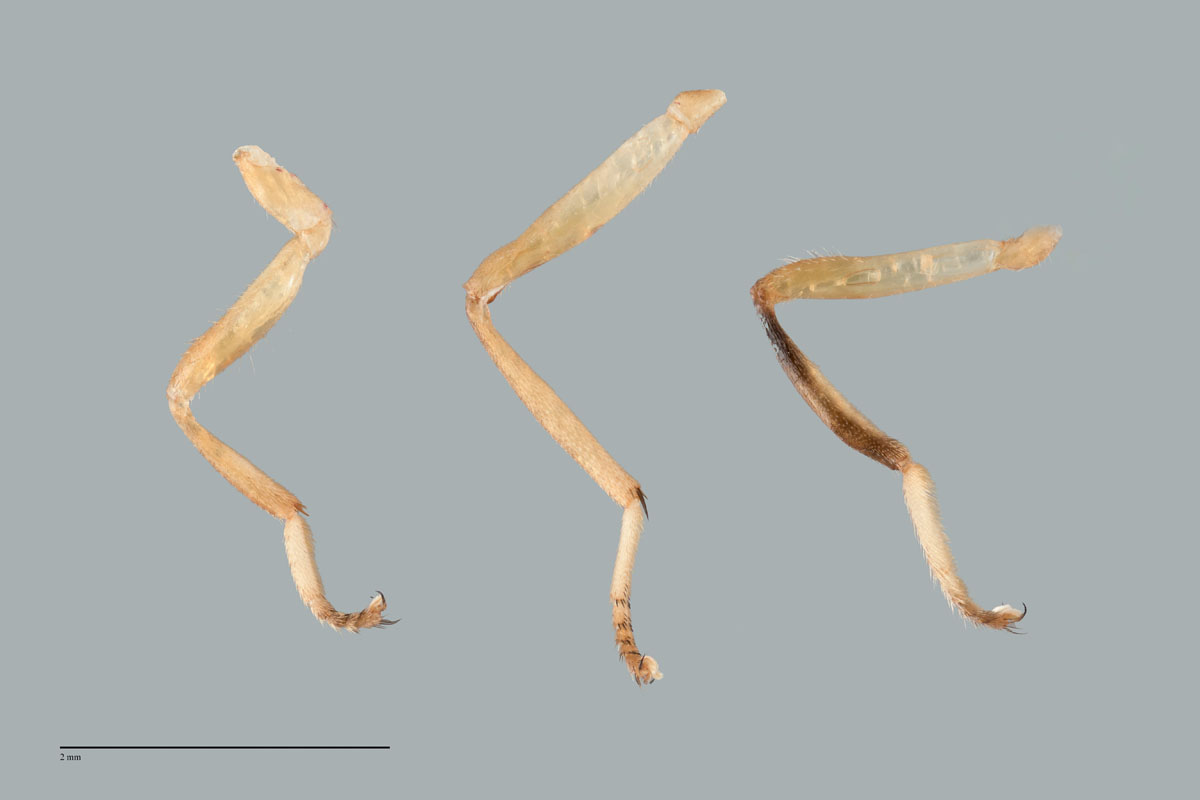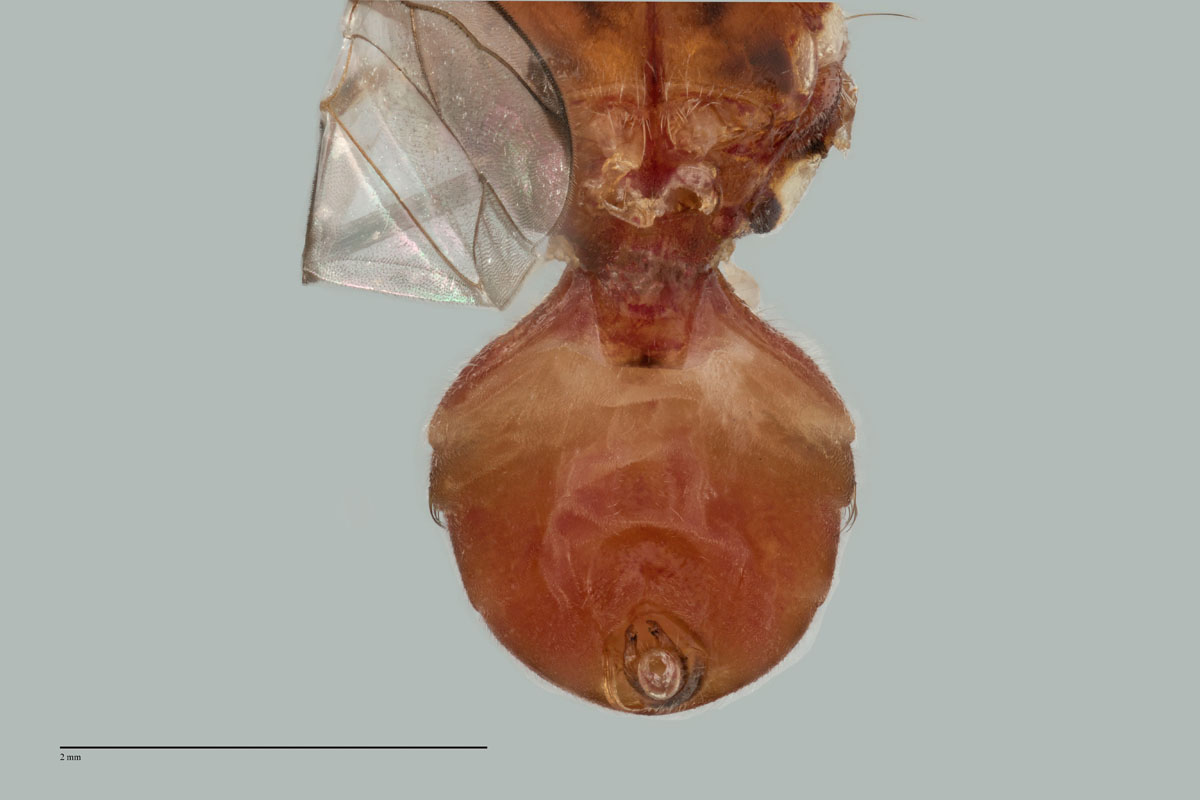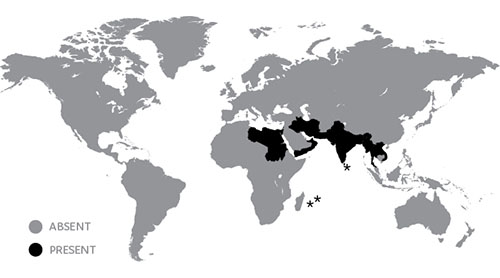Diagnosis
Morphological – adult
Features include:
- Face fulvous with a pair of medium sized oval black spots
- scutum red-brown with pale fuscous patterning posteriorly
- postpronotal lobes and notopleura yellow
- mesopleural stripe reaching to or almost to anterior npl. seta dorsally
- medium width parallel sided lateral postsutural vittae ending at or just behind ia. seta
- medial postsutural vitta absent
- scutellum yellow
- legs with all segments entirely fulvous except apices of femora red-brown and hind tibiae pale fuscous to fuscous
- wings with cells bc and c colourless and entirely devoid of microtrichia
- a narrow fuscous costal band confluent with R2+3 and ending at apex of this vein
- a small oval fuscous spot across apex of R4+5
- anal streak reduced to a pale tint within cell cup; supernumerary lobe of medium development
- abdominal terga III-V red-brown with a ‘T’ pattern consisting of a narrow transverse black band across anterior margin of tergum III (this band is often broken in the central region) and a narrow medial longitudinal black band over all three terga (this band is often reduced to a stripe over parts of terga IV and V)
- narrow anterolateral fuscous corners on terga IV and V
- a pair of oval red-brown shining spots on tergum V
- posterior lobe of male surstylus short
- female with apex of aculeus needle shaped (Drew and Romig 2013).
Morphological – larvae
Information not available.
Molecular
DNA barcoding
Diagnostic BOLD reference data available.
COI data
B. zonata ZON001 Classic morphology Folmers COI
B. zonata ZON003 Classic morphology Folmers COI
B. zonata ZON004 Classic morphology Folmers COI
RPA2 data
B. zonata ZON001 Classic morphology RPA2
B. zonata ZON003 Classic morphology RPA2
B. zonata ZON004 Classic morphology RPA2
DDOSTs2 data
B. zonata ZON001 Classic morphology DDOSTs2
B. zonata ZON003 Classic morphology DDOSTs2
B. zonata ZON004 Classic morphology DDOSTs2
POP4 data
B. zonata ZON001 Classic morphology POP4
B. zonata ZON003 Classic morphology POP4
EIF3L data
B. zonata ZON001 Classic specimen EIF3L
PCR-RFLP Test 1
BsrI: 600, 200
HinfI: Does not cut
HhaI: 680, 190
Sau3AI: Does not cut
SnaBI: 535, 330
SspI: 750, 120
Vspl: Does not cut
Approximate ITS1 fragment length – gel: 850 bp
PCR-RFLP Test 2
No fully diagnostic restriction enzymes, but a combination of several can be chosen to distinguish B. zonata from other Bactrocera and species in other genera.
See Restriction enzyme haplotype chart and Diagnostic restriction patterns.
